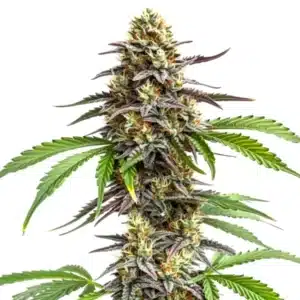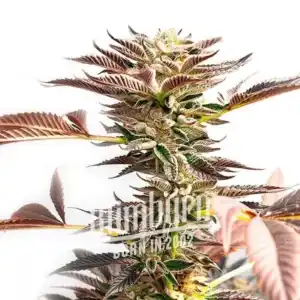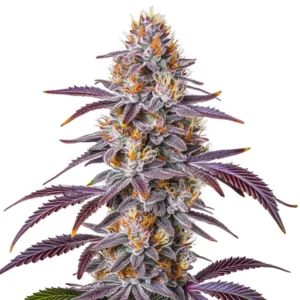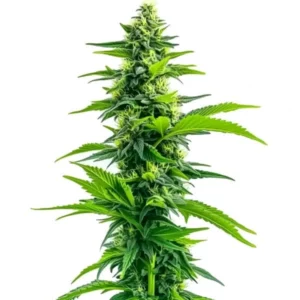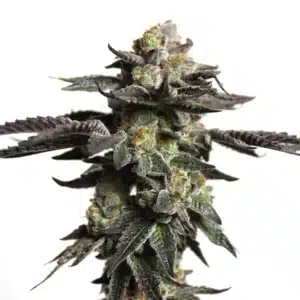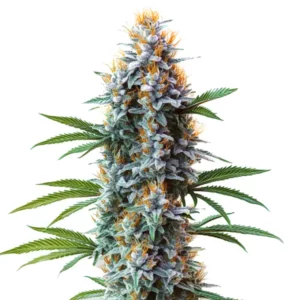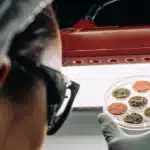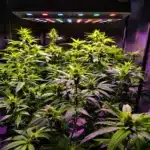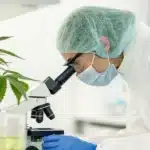
Why Light Spectrum Matters for Cannabis Cultivation
When growing cannabis, one crucial factor often underestimated is the light spectrum. Different wavelengths of light have varied effects on plant growth and development. The optimal light spectrum for cannabis growth can significantly influence the quality and yield of your crop.
Cannabis plants use photosynthesis to convert light into energy. The function of light spectrum in cannabis photosynthesis is critical. Each color within the light spectrum has unique properties that can either enhance or hinder plant growth. Knowing these differences can help tailor your growing environment for maximum yield.
Recommended Strains
Blue Dream
|
|
THC | 17% - 24% (Medium) |
|
|
Type | Feminized |
|
|
Yield | High |
|
|
Phenotype | 50% Indica / 50% Sativa |
Girl Scout Cookies
|
|
THC | 18% - 25% (Medium) |
|
|
Type | Feminized |
|
|
Yield | High |
|
|
Phenotype | 60% Indica / 40% Sativa |
Many growers find that spectrum-specific LED lights for cannabis provide better control over plant development. These lights allow cultivators to fine-tune the light spectrum to meet the specific needs of their plants at various growth stages. This level of control can lead to healthier plants and improved yields.
The Science Behind Light Spectrum
Light consists of different colors, each with distinct wavelengths. In cannabis cultivation, the most important colors are blue and red. Blue light, with its short wavelength, is crucial during the vegetative stage. It helps in the development of strong roots and robust foliage.
Red light, on the other hand, has a longer wavelength and is vital during the flowering stage. It encourages budding and increases flower density. Balancing these two colors can optimize plant health and yield, showcasing why light spectrum matters for cannabis cultivation.
The optimal light spectrum for cannabis growth is not static; it changes with the plant’s life cycle. Knowing the interaction between light wavelengths and plant physiology allows growers to manipulate growth patterns and maximize productivity. By optimizing the light conditions, cultivators can not only improve the yield but also enhance the plant’s chemical profile, leading to a more potent and aromatic product.
The role of light spectrum in cannabis photosynthesis cannot be overstated. Each wavelength interacts with chlorophyll and other pigments differently, impacting the efficiency of photosynthesis and energy conversion. By strategically utilizing these wavelengths, growers can ensure their plants receive the best possible conditions for growth, further underscoring the cannabis cultivation light spectrum importance.
Blue Light: Boosting Vegetative Growth
Blue light is essential for the vegetative phase of cannabis growth. It encourages compact and bushy plants, preventing them from becoming too tall and lanky. This is particularly important for indoor growers who may have limited space.
When using spectrum-specific LED lights for cannabis, ensure that your setup provides adequate blue light during the early stages. This will set a strong foundation for later growth phases. For example, the Blue Dream strain from Blimburn Seeds benefits greatly from ample blue light during vegetative growth.
While blue light is crucial, it should be balanced with other parts of the spectrum. Overexposure to blue light can lead to slow growth and reduced yield. Thus, moderation and balance are key.
The effects of light spectrum on cannabis yield during the vegetative stage are significant. Proper exposure to blue light results in robust leaf development and strong stems, which are vital for supporting heavy buds later. This phase sets the stage for successful flowering, emphasizing why light spectrum matters for cannabis cultivation from the onset.
Knowing the function of light spectrum in cannabis photosynthesis during this phase helps growers fine-tune their lighting systems. By adjusting the intensity and duration of blue light, cultivators can create an environment that maximizes growth potential, ensuring their plants remain healthy and vigorous throughout the vegetative stage.
Red Light: Enhancing Flowering and Yield
Red light takes center stage during the flowering phase. It plays a critical role in promoting bud formation and increasing resin production. Many growers switch to red-heavy light spectra as their plants transition to flowering.
Strains like Girl Scout Cookies from Blimburn Seeds can see substantial improvements in yield and potency with the right red light exposure. This demonstrates the effects of light spectrum on cannabis yield, making it a crucial aspect for any serious grower.
However, too much red light can lead to stretched plants and reduced bud quality. A balanced approach ensures that plants receive the optimal light spectrum for cannabis growth, resulting in a high-quality harvest.
The cannabis cultivation light spectrum importance is particularly evident during the flowering stage. Red light not only influences the size and density of the buds but also affects the terpene profile and cannabinoid concentration, which are critical for the plant’s potency and aroma.
By managing the balance between red and other light spectrums, growers can enhance the overall quality of their harvest. Spectrum-specific LED lights for cannabis provide the versatility needed to achieve this balance, allowing for adjustments that cater to the unique needs of each strain and growth phase.
Full Spectrum and Mixed Light Strategies
While blue and red lights are vital, a full-spectrum approach offers a more comprehensive solution. Full-spectrum lights mimic natural sunlight, providing a balanced mix of all colors. This can be beneficial in all stages of growth.
Strains like Sour Diesel from Blimburn Seeds thrive under full-spectrum lighting, as it supports both vegetative growth and flowering. A mixed light strategy allows growers to adjust the spectrum as needed, ensuring plants get the best possible light exposure.
Growers who invest in full-spectrum or adjustable spectrum lights often see healthier plants and better yields. This flexibility highlights the cannabis cultivation light spectrum importance and its impact on overall plant health.
The optimal light spectrum for cannabis growth can often be achieved through full-spectrum lighting, which reduces the need for multiple light sources. This can simplify the growing process and reduce costs over time, making it a popular choice for both novice and experienced cultivators.
The effects of light spectrum on cannabis yield are maximized when using a mixed light strategy, as this approach allows for continuous optimization throughout the plant’s life cycle. This ensures that each growth stage receives the precise light conditions required for the best possible results.
- Blue light is crucial during the vegetative stage.
- Red light enhances flowering and bud formation.
- Full-spectrum lighting provides a balanced approach.
- Spectrum-specific LED lights offer precise control.
- Strains like Blue Dream, Girl Scout Cookies, and Sour Diesel benefit from spectrum management.
Promos & Deals
Practical Tips for Managing Light Spectrum
Managing the light spectrum effectively requires knowing your specific strain’s needs. Different strains have different light requirements. Adjust your light setup based on the plant’s growth stage and specific strain characteristics.
Investing in quality lighting equipment can make a significant difference. Spectrum-specific LED lights for cannabis allow for precise control over light exposure. This can lead to improved plant health and increased yields, proving why light spectrum matters for cannabis cultivation.
Successful cannabis cultivation hinges on the ability to adapt your light spectrum strategy to the ever-changing needs of your plants. Regularly monitoring plant health and growth patterns can provide valuable insights into how well your current light setup is working, allowing you to make necessary adjustments.
The cannabis cultivation light spectrum importance extends beyond just yield; it impacts the overall health and vitality of your plants. By maintaining optimal light conditions, you can prevent common issues such as nutrient deficiencies and pest infestations, leading to a more successful and rewarding cultivation experience.
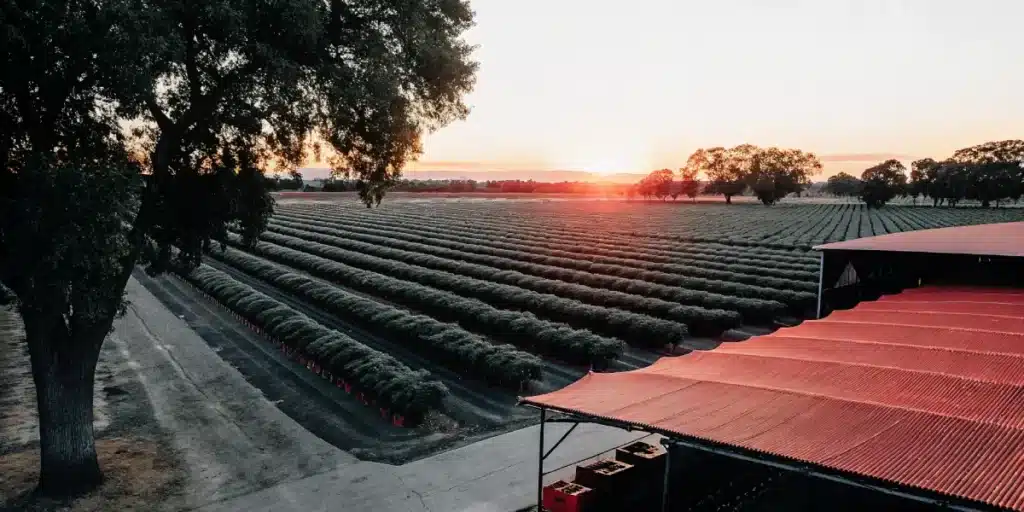
Using LED Lights for Spectrum Control
LED lights have revolutionized cannabis cultivation. They offer customizable spectra, energy efficiency, and longer lifespans compared to traditional lighting. For instance, switching from metal halide to LED can cut energy consumption significantly.
Spectrum-specific LED lights for cannabis can be adjusted to emit more blue light during vegetative growth and more red light during flowering. This adaptability ensures plants receive the optimal light spectrum for cannabis growth throughout their lifecycle.
Furthermore, LEDs produce less heat, reducing the risk of burning plants. This allows lights to be placed closer to the canopy, maximizing photosynthesis and improving plant development.
The function of light spectrum in cannabis photosynthesis is enhanced by the precision offered by LED technology. By providing consistent and accurate light conditions, LEDs help ensure that plants can photosynthesize efficiently, resulting in robust growth and development.
Besides to their efficiency and adaptability, spectrum-specific LED lights for cannabis provide an environmentally friendly solution. Their low energy consumption and reduced waste make them a sustainable choice for those looking to minimize their carbon footprint while still achieving high-quality harvests.
Adjusting Light Spectrum for Different Growth Stages
During the vegetative stage, prioritize blue light to encourage strong, healthy growth. This is especially important for young plants establishing their root systems. Transition to a red-heavy spectrum as plants begin to flower.
For example, the effects of light spectrum on cannabis yield are evident when you switch to a red-dominant spectrum during flowering. Plants like Girl Scout Cookies will respond with denser buds and higher resin production.
Regularly monitor plant response to light adjustments. Use these observations to fine-tune your lighting strategy, ensuring each strain receives optimal light conditions for its growth stage.
The cannabis cultivation light spectrum importance is highlighted by the need for tailored light strategies at each growth stage. By knowing the unique requirements of different phases, growers can provide conditions that optimize both growth and yield.
This adaptability in adjusting the light spectrum is a key reason why light spectrum matters for cannabis cultivation. It allows for a dynamic approach to growing, where cultivators can respond to the needs of their plants in real-time, ensuring the best possible outcomes.
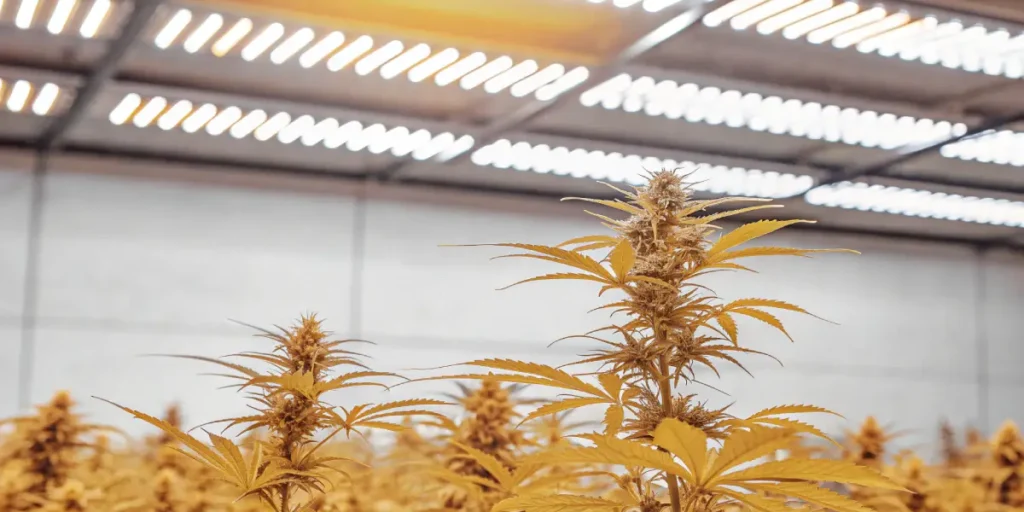
FAQs
What is the best light spectrum for cannabis growth?
The best light spectrum for cannabis growth depends on the plant’s growth stage. Blue light is ideal for vegetative growth, promoting strong, healthy leaves and stems. Red light is more beneficial during the flowering stage, enhancing bud development and increasing yield.
Using a full-spectrum or spectrum-adjustable LED light allows growers to provide the right light at each stage. This flexibility ensures that plants receive the optimal light spectrum for cannabis growth, leading to healthier plants and better harvests.
The cannabis cultivation light spectrum importance becomes apparent when considering the varying needs of different strains and growth phases. By adopting a flexible lighting approach, growers can cater to these needs and maximize the potential of their crops.
Ultimately, the role of light spectrum in cannabis photosynthesis is to ensure that each plant receives the most effective wavelengths for growth and development. Whether through blue light for vegetative growth or red light for flowering, the right spectrum can lead to a more successful cultivation process.
How does light spectrum affect cannabis yield?
The effects of light spectrum on cannabis yield are profound. A balanced light spectrum can enhance photosynthesis, leading to more robust plant growth and increased bud production. Blue light supports vegetative growth, while red light boosts flowering and bud density.
By carefully managing the light spectrum, growers can maximize yield and improve the quality of their cannabis crops. This is particularly important for indoor growers who rely solely on artificial lighting for plant development.
Knowing why light spectrum matters for cannabis cultivation is crucial for achieving high yields. By providing the right spectrum at the right time, growers can influence not only the quantity but also the quality of the harvest, resulting in a more potent and marketable product.
The optimal light spectrum for cannabis growth is a dynamic target that changes with the plant’s lifecycle. By staying attuned to these changes, cultivators can ensure their plants receive the best possible conditions for maximum yield.
Are spectrum-specific LED lights for cannabis worth the investment?
Spectrum-specific LED lights for cannabis are worth the investment for many growers. They offer precise control over light exposure, allowing for tailored light spectra at different growth stages. This can lead to healthier plants and improved yields.
While the initial cost may be higher compared to traditional lighting, the energy efficiency and longevity of LEDs can result in long-term savings. Additionally, the improved yield and quality of the harvest can quickly offset the initial investment.
The cannabis cultivation light spectrum importance is emphasized by the ability of spectrum-specific LED lights to adapt to the needs of different strains. This adaptability ensures that each plant receives the optimal conditions for growth, resulting in a more efficient and successful cultivation process.
Moreover, the environmental benefits of LEDs, such as reduced energy consumption and waste, make them an attractive option for sustainable growers looking to minimize their ecological impact while still achieving excellent results.
Why is light spectrum important in cannabis photosynthesis?
Light spectrum plays a crucial role in cannabis photosynthesis, the process by which plants convert light into energy. Different wavelengths of light are absorbed by chlorophyll, the pigment responsible for photosynthesis, at different rates.
Blue and red light are most effectively absorbed and are critical for plant growth and development. Without the right light spectrum, photosynthesis can be less efficient, leading to slower growth and reduced yields.
Knowing why light spectrum matters for cannabis cultivation is essential for optimizing photosynthesis. By providing the right wavelengths at the right times, growers can ensure their plants are converting light into energy as efficiently as possible, leading to healthier and more productive crops.
The role of light spectrum in cannabis photosynthesis is further highlighted by its impact on plant morphology and chemical composition. By influencing these aspects, growers can tailor their cultivation practices to produce plants with desired traits and characteristics.
Can I use natural sunlight as the sole light source for cannabis cultivation?
Natural sunlight can be an excellent light source for cannabis cultivation, providing a full spectrum that supports all growth stages. However, using sunlight alone may not be feasible for indoor growers or in regions with limited sunlight.
Supplementing natural light with artificial lighting, such as spectrum-specific LED lights for cannabis, can ensure plants receive consistent light exposure. This combination can lead to healthier plants and more consistent yields, regardless of outdoor weather conditions.
While natural sunlight offers a comprehensive spectrum, the cannabis cultivation light spectrum importance means that consistent and controlled light conditions are often necessary for optimal growth. By combining sunlight with artificial sources, growers can achieve the best of both worlds.
This approach ensures that plants receive the optimal light spectrum for cannabis growth at all times, providing a stable environment that supports robust growth and high yields, even in less-than-ideal outdoor conditions.




